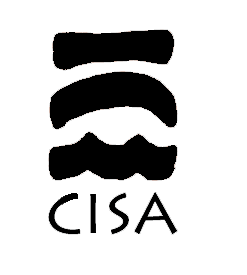EVALUATION OF ELEMENTS DISTRIBUTION IN PRINTED CIRCUIT BOARDS FROM MOBILE PHONES BY MICRO X-RAY FLUORESCENCE
- Giuseppe Bonifazi - Department of Chemical Engineering, Materials and Environment, Sapienza University of Rome, Italy
- Giuseppe Capobianco - Department of Chemical Engineering, Materials and Environment, Sapienza University of Rome, Italy
- Roberta Palmieri - Department of Chemical Engineering, Materials and Environment, Sapienza University of Rome, Italy
- Silvia Serranti - Department of Chemical Engineering, Materials and Environment, Sapienza University of Rome, Italy
- Available online in Detritus - Volume 14 - March 2021
- Pages 78-85
Released under CC BY-NC-ND
Copyright: © 2021 CISA Publisher
Abstract
A micro X-ray fluorescence-based approach for the chemical characterization of spent printed circuit boards (SPCB) from mobile phones was applied. More in detail, twelve spent mobile phones were grouped in three clusters depending on brands, models and release year and a study to evaluate the technological evolution of SPCBs over time was carried out. Precious and dangerous elements were investigated and some differences between samples belonging to the different groups were detected. For instance, the distribution of gold on the SPCB layers was more widespread for the older analyzed samples, and a smaller and smaller quantities of bromine and lead were detected in the more recent models in accordance with the Restriction of Hazardous Substances Directive 2002/95/EC. The analysis of SPCB composition can help to correctly manage such a complex waste, maximizing the recovery of base, critical and precious metals and considering the possible presence of harmful elements to be carefully managed. The experimental results showed as, through the proposed approach, it is possible to obtain chemical elements distribution maps of SPCBs surface, thus allowing to define optimal strategies for their further handling (i.e. classification) and processing (i.e. critical/precious metals recovery).Keywords
- Micro X-ray fluorescence
- PCB (Printed Circuit Board)
- WEEE (Waste from Electrical and Electronic Equipment)
- Mobile phones
- Recycling
Editorial History
- Received: 03 Jan 2021
- Revised: 27 Feb 2021
- Accepted: 03 Mar 2021
- Available online: 31 Mar 2021
References
Bonifazi, G., Capobianco, G., Palmieri, R., Serranti, S., 2018. A methodological approach for the characterization of printed circuit boards from smartphones by micro x-ray fluorescence. Proceedings SUM2018, Fourth Symposium on Urban Mining, 21-23 May 2018 (Bergamo, Italia)
Chancerel, P., Rotter, S., 2009. Recycling-oriented characterization of small electrical and electronic equipment. Waste Manage., 29, 2336-235
Hira, M., Yadev, S., Morthekai, P., Linda, A., Kumar, S., Sharma, A., 2018. Mobile Phones – An asset or a liability: A study based on characterization and assessment of metals in waste mobile phone components using leaching tests. J. Hazard. Mater., 342, 29-40
Kasper, A.C., Bernardes, A.M., Veit, H.M., 2011a. Characterization and recovery of polymers from mobile phone scrap. Waste Manage. Res., 29(7), 714-726
Kasper, A.C., Berselli, G.B.T., Freitas, B.D., Tenório, J.A.S., Bernardes, A.M., 2011b. Printed wiring boards for mobile phones: Characterization and recycling of copper. Waste Mange, 31, 2536-2545
Paianoa, A., Lagioia, G., Cataldo, A., 2013. A critical analysis of the sustainability of mobile phones use. Resour. Conerv. Recycl. 73, 162-171
Palmieri, R., Bonifazi, G., Serranti, S., 2014. Recycling-oriented characterization of plastic frames and printed circuit boards from mobile phones by electronic and chemical imaging. Waste Manage.,34, 2120-2130
Singh, N., Duan, H., Ogunseitan, O.A., Li., J., Tang, Y., 2019. Toxicity trends in E-Waste: A comparative analysis of metals in discarded mobile phones. J. Hazard. Mater., 380, 1-9
Tan, Q., Dong, Q., Liu, L., Song, Q., Liang, Y., Li, J., 2017. Potential recycling availability and capacity assessment on typical metals in waste mobile phones: A current research study in China. J. Clean. Prod., 148, 509-517




